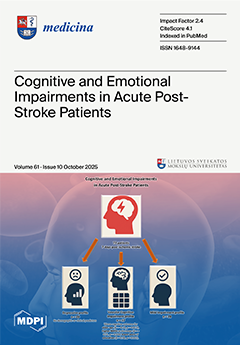Background and Objectives: The aim of this study is to evaluate the changes in speckle tracking velocity vector analysis (VVI) values within the descending thoracic aorta (DTA) in patients with cardiogenic shock (CS) who are on mechanical ventilation (MV), under varying levels of positive end-expiratory pressure (PEEP).
Materials and Methods: Transthoracic echocardiography (TTE) was performed during incremental increases in positive end-expiratory pressure (PEEP) from 0 to 15 cmH
2O over 15 to 30 min. The effects of increased PEEP on velocities, displacement, strain (S), and strain rate (SR) were evaluated. DTA speckle tracking values were analyzed to determine their association with patient mortality. A control group of healthy individuals was used to establish normal DTA variables.
Results: Sixty-two mechanically ventilated patients were included in this study. The mean age was 62.48 ± 11.22 years. The highest values for various parameters were obtained with 5 cmH
2O PEEP. The values obtained for DTA using speckle tracking at increasing PEEP levels (ZEEP, PEEP 5, PEEP 10, and PEEP 15 cm H
2O) were as follows: DTA rotational velocity [55.18 ± 14.60, 107.39 ± 19.33, 60.05 ± 0.28, and 42.11 ± 0.34°/s], DTA radial velocity [0.80 ± 0.09, 2.21 ± 0.27, 0.99 ± 0.16, 0.56 ± 0.17 cm/s], DTA rotational displacement [5.68 ± 0.40, 15.71 ± 0.13, 5.98 ± 0.35, 6.64 ± 3.45°], circumferential strain for DTA [−8.55 ± 0.92, −11.86 ± 0.07, −9.88 ± 0.25, −8.76 ± 0.6%], and DTA circumferential SR [−0.87 ± 0.1, −1.91 ± 0.03, −1.21 ± 0.12, −0.97 ± 0.05/s]; all
p-values < 0.05. Logistic binary regression found left ventricular strain and DTA rotational displacement on 5 cmH
2O PEEP level were associated with death.
Conclusions: Changes in PEEP levels affect the speckle tracking measurements of the DTA. Speckle tracking can be used to assess the thoracic aorta, and certain parameters, such as rotational displacement, may relate to the prognosis of cardiogenic shock.
Full article






